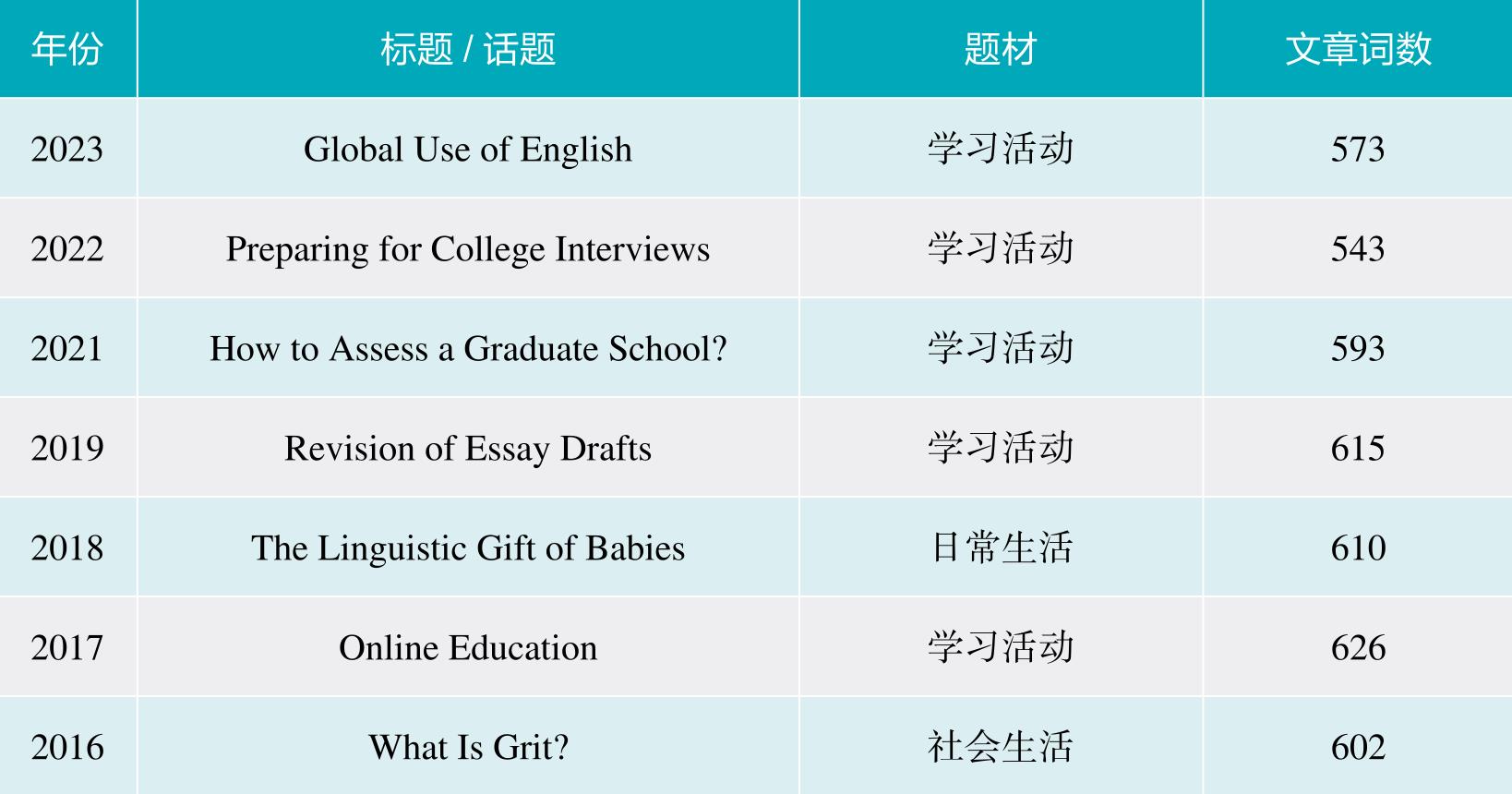




英语专业四级考试听力理解中小讲座的题型是于2016年考试中正式启用的,其内容与日常生活、社会生活和学习活动息息相关。
下面我们来看一下近几年考试真题中小讲座的题材。

小讲座部分是由某方面的专业人士为听众讲授日常生活、社会生活或学习活动方面的相关知识,因此小讲座具有口语化的特点,句式结构和用词都比较简单。
★ 用词简单,难词有讲解
因为小讲座是由某方面的专业人士向听众传授知识,所以使用的语言较为浅显易懂,即使出现一些专有名词、专业术语等较难的词汇,讲座中也会通过简单的词语进行解释。
以2018年小讲座的一段内容为例:
So the question is: What is happening during the critical two-month period? We know this is the critical period for sound development, but what's going on up there? Maybe there are two things going on. The first is that the babies are listening intently to us, and they're taking statistics as they listen to us talk—they're taking statistics. That is to say, the two babies listen to their own mothers speaking motherese —the universal language we use when we talk to kids. During the production of speech, when babies listen, what they're doing is taking statistics, that is sound distribution on the language that they hear.
整段话中用词都比较简单,出现的唯一一个考生可能不熟悉的名词是motherese。讲话者接着就对这个名词进行了解释,即the universal language we use when we talk to kids。
★ 用句简洁明了,用问题引起注意
小讲座在用句上都采用比较简单的结构,不会出现非常复杂或冗长的句式。例如2022年小讲座中每一段的首句或前两句:
☛ 第一段前两句: Good morning, everyone. Today my presentation will focus on the preparation for a college interview.
☛ 第二段首句: The first is by doing mock interviews with others who are also applying, or someone else who is willing to help.
☛ 第三段首句: Now, let's come to the second way.
☛ 第四段前两句: Okay. To conclude, we have discussed how to prepare for a college interview.
从2022年小讲座的听力原文中我们可以看出,每段开头均开门见山、直入主题,表达简洁明了。
另外,小讲座中还常使用提问的方式呈现讲座内容,以引起听众注意。例如2019年小讲座的听力原文中出现的:
☛ You ask yourself “Do I reach my writing objective? Does my essay directly answer the question? Is my main idea clear?”
☛ So, what is a good essay then?
☛ Then, what is the second step in revision?
☛ Is your essay approximately the right length?
★ 语音、语调
讲话者在讲座中会有一些语音、语调的变化,这些变化主要体现在以下几点:
(a) 讲话者反复重复重要的观点
(b) 讲话者重读或采用升调来表示强调
(c) 讲座中会使用口语中常出现的连读,如:wanna、gonna、a grea(t) change、here and(连读为/hirnd/)等
对讲座中这些口语化特点的掌握有助于考生减少遇到难词时的恐慌,同时还有利于考生通过讲话者的语音、语调抓住听音重点。
通过研究近几年的真题不难发现,小讲座的结构非常清晰,基本都采用的是“总—分—总”式结构,即在小讲座开头给出主题,然后在主体部分对分论点分别进行论证、分析和讲解,最后进行简要总结。
以2021年专四真题为例:
讲话者在开头就点明了小讲座讨论的主题:
Good morning everyone, I guess some of you may have already started thinking about further study overseas after graduation. But few people would thoroughly consider all of the aspects of a graduate school before application. The criteria I am going to talk about today can help spur your thinking about choosing a proper school. Of course, the most important criteria will depend upon your specific needs, but there are also several general criteria to follow.
主体部分就选择学校的五个标准进行了介绍:
First guideline is reputation.
The second criterion lies in location of the school.
The third thing to consider is safety.
Now the next factor to consider is school facilities and housing.
Finally, mission is a major factor as well.
结尾处对讲座内容进行了总结:
OK. Today we have discussed some general principles on how to choose a graduate school. I hope the information will be useful to you when you apply for graduate schools.
因为小讲座有这种显著的结构特点,所以听懂小讲座的开头是非常重要的。考生听懂了小讲座的开头,也就抓住了小讲座的主旨和目的,为理解下面的分论点奠定了基础。同样值得注意的是,在有些小讲座的开头,讲话者往往还会列出分论点,这也就意味着抓住了开头,就抓住了小讲座的基本结构。